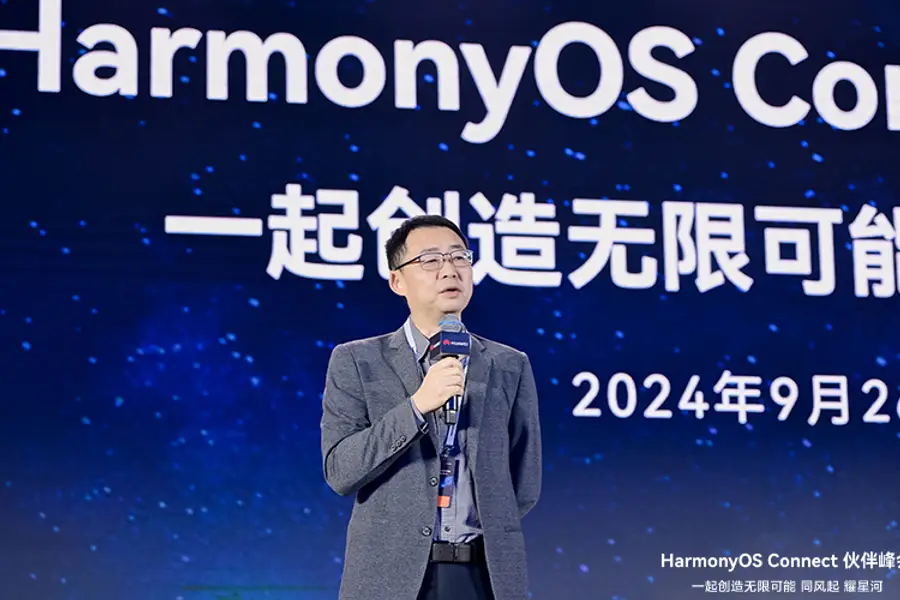Huawei turns up HarmonyOS volume with launch of PC edition

The company’s latest rollout comes as it tries to convince more app developers to make versions of their products for its operating system
Key Takeaways:
- Huawei has launched PCs powered by its Harmony operating system, seeking to challenge the global dominance of Windows and Mac OS
- The company’s aggressive drive to a develop a third OS is being hobbled by relatively low app adoption, but could gain government support on China’s tech self-sufficiency drive
By Hugh Chen
Developing an operating system (OS) is notoriously difficult — not just because the technology is complex, but also because convincing app developers and users to adopt your system is enormously challenging. Microsoft’s foray into cellphone operating systems in the early 2010s exemplifies this struggle, despite the huge advantages it enjoyed with Windows in the PC realm. Despite billions in investment and big talk of a new OS to rival the duopoly of Android and iOS, history ultimately hung up on Windows Phone.
The latest company attempting to crack the decades-long duopoly is China’s Huawei Technologies — a mission the company is not pursuing by choice, but out of necessity after the U.S. effectively banned it from using Android.
Huawei’s alternative, HarmonyOS, made headlines last week when the company formally entered the race to crack the Windows-Mac OS duopoly with the company’s rollout of a version of the OS for PCs. In conjunction with the move, Huawei also unveiled two new laptop models powered by the latest HarmonyOS 5.0 system.
The MateBook Fold, which features an 18-inch OLED dual screen when fully extended and lacks a physical keyboard, isn’t cheap, priced at 23,999 yuan ($3,331). The MateBook Pro, which uses a conventional laptop design, is more affordable, starting at 7,999 yuan.
The latest launches extend Huawei’s years of effort at developing a U.S.-proof supply chain since first falling afoul of Washington for selling technology to Iran in violation of U.S. sanctions. In addition to HarmonyOS, Huawei has also been developed its own advanced semiconductors after the U.S. sanctions nearly crippled its once fast-rising smartphone business.
Huawei isn’t hiding the difficulty of developing an OS. During the product launch, the company told audiences it “kept on doing the hard things but the right things.” Like many of Huawei’s recent product releases, the event skillfully tapped into nationalist sentiment, with the company declaring that “The Harmony laptop gives the world a new choice” in a market dominated by U.S.-developed products.
The company announced that more than 1,000 apps have already been adapted for the Harmony PC operating system. The most prominent include WPS, an office suite similar to Microsoft Office, and Feishu, ByteDance’s work collaboration app similar to Slack.
Huawei has talked about developing its own OS since at least 2019, releasing Harmony 1.0 that year immediately after U.S. sanctions barred its access to Android. However, its efforts only gained real momentum last year with the release of HarmonyOS NEXT — later rebranded as Harmony 5.0 — after months of testing. Unlike previous versions, this iteration is completely Android-free, marking a complete divorce from Android code.
Judging from its adoption by app developers, HarmonyOS 5.0 has made significant progress. As of this month, over 20,000 apps were available in Harmony’s app store, up sharply from 15,000 in November, according to company data. While that’s still a tiny fraction of the roughly 2 million apps offered on both the Apple and Google Play app stores, it shows that developers are starting to notice Harmony.
WeChat milestone
A notable milestone came when a version of WeChat officially launched in Harmony’s app store after months of internal testing, nearly a year after WeChat first decided to develop an app for HarmonyOS 5.0 in early 2024. With the arrival of WeChat — an app that Chinese use for everything from communication to payments — most major Chinese apps now offer a Harmony version of their product, including Douyin, the Chinese version of TikTok, as well as ride-hailing app DiDi.
While that represents progress for Harmony, it’s just the first step toward building a successful OS. Most apps on Harmony still offer only core functions and lack the complete feature sets found in their Android and iOS counterparts. For example, Harmony’s WeChat app is missing key functions like the ability to share articles to Moments, WeChat’s social feed feature.
Huawei is also mostly focusing its efforts on popular Chinese apps for now, since its PCs and smartphones are largely now sold only in China. Taking its act global could be another matter, not only due to lack of Huawei products outside China, but also because the U.S. is likely to resist such efforts and put up obstacles.
Even in China, the major challenge lies in persuading developers to invest resources in Harmony. Like Microsoft discovered in the 2010s, this is no small feat. It’s a classic paradox: if developers won’t invest resources, users will abandon the OS due to poor app experiences. And as users leave, developers become even less willing to invest, creating a vicious cycle.
Huawei’s aggressive push to transition users to the latest HarmonyOS version also risks alienating its fan base used to earlier versions. Earlier this year, its decision to remove the rollback function for HarmonyOS 5.0 sparked widespread controversy. The company automatically upgraded users to the newest HarmonyOS 5.0 without giving them the option to revert to earlier versions. This caused problems for many users as some apps are not compatible with the latest version.
There’s no doubt that Huawei’s large user base provides a strong foundation for developing an OS. According to QuestMobile, during the first quarter of this year, there were 282 million active Huawei smartphones in China, ranking first domestically and surpassing Apple’s 270 million and Oppo’s 233 million.
But the backlash it received for forcing the transition to HarmonyOS 5.0 offers a lesson that it needs to tread carefully — giving developers time to improve app functionality while gradually increasing user adoption.
While it’s been nearly a decade since Microsoft formally abandoned its Windows Phone OS and no serious rivals have emerged since, Huawei may still offer the best latest chance at challenging that duopoly. Part of that is due to geopolitical reasons, since developing an indigenous OS is a strategic priority from Beijing in its efforts to wean China from reliance on Western technology. Huawei has offered up the best chance at doing that so far, and thus almost certainly is enjoying strong government support.
In many ways, Huawei’s HarmonyOS represents not only a money-making move, but is also an existential bet that it can’t afford to lose. Its latest PC Harmony release extends previous statements that it aims to become the OS for the future Internet of Things (IoT), connecting devices like automobiles, smart home appliances and industrial equipment. Domestic company ChinaSoft also launched a version of Harmony for robots last month. Through such moves, Huawei is trying to position itself to profit as owner of a comprehensive ecosystem that extends far beyond smartphones and computers.
To subscribe to Bamboo Works weekly free newsletter, click here




